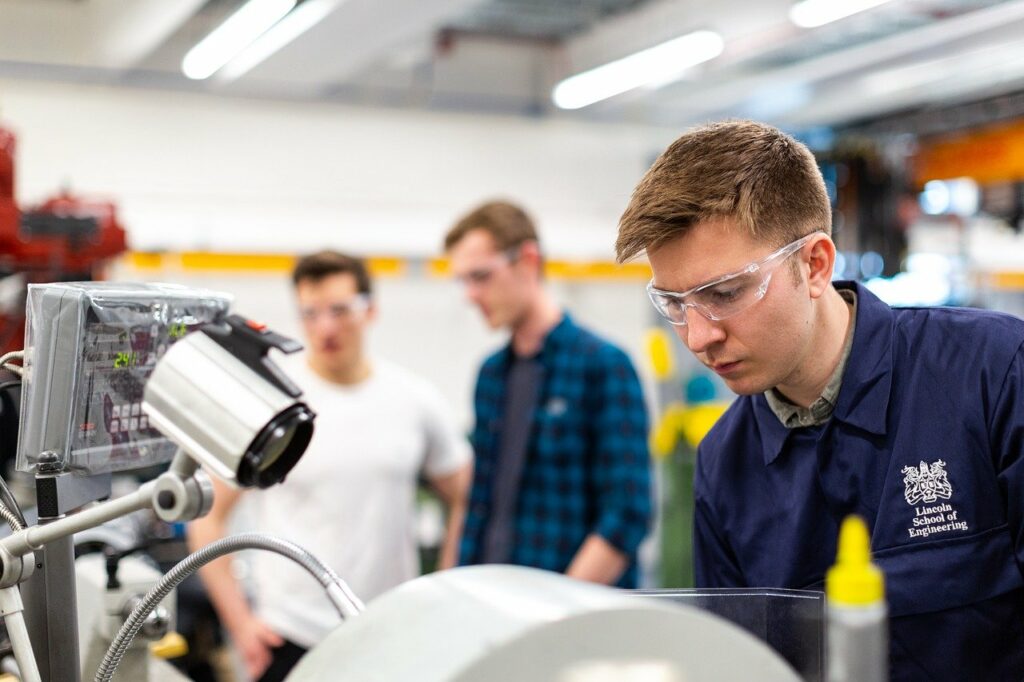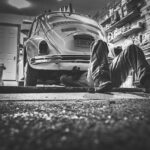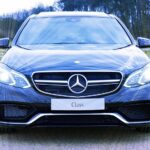1. Introduction

The Core Interview is one of the most challenging Interviews among all. It has various stages and good quality questions that one needed to answer to qualify the same. This article will be taking you through one of the most asked technical mechanical engineer interview Questions in the mechanical Engineering Interviews and how to answer them. We will also be telling you about how Interview is conducted and some of the demanding jobs for fresher’s and experienced professionals. So, let’s get started.
2. Job Profile for Freshers and Experienced Professionals
A Mechanical Engineer has good scope in various domains. Talking about the Industrial requirements, it varies from Organization to Organization. Overall, a skilled Mechanical Engineer will find Job more quickly than one with only theoretical knowledge. Keeping pace with growing Industries is also very important. We are moving towards Industry 4.0, and the requirements of a Mechanical Engineer in Industrial Automation (Such as Robotics) are essential. Developing skills in this domain will give you a better edge than others.
The List below contains some of the Job Profile with years of Experienced required:
| Job Profile | Year(s) of Experienced required* |
| Operations | 0-3 Years |
| Supply Chain | 0-5 Years |
| Design Engineer | 2-5 Years |
| Manufacturing Engineer | 2-5 Years |
| Process Planning | 5-10 Years |
| Technical Lead | 5-10 Years |
*Data collected by seeing Job Requirements of different companies and may differ for some companies.
There are various other Core Jobs also, which require the same level of experience, but these are some of the Demanding Jobs. Overall, a company needs a candidate to meet the following requirements:
- Bachelor’s and Master’s degree in Mechanical Engineering and related fields (Master’s preferred)
- Superior Computer Skills with knowledge in various CAD-CAM Softwares
- Ability to run and verify the simulation to obtain data for field test and comparison
- Ability to write excellent and comprehensive Technical documentations
- Highly analytical skills with the ability to observe minute detail of a component
3. Interview Rounds
Different companies have different criteria for selecting candidates for the given position. We have searched for the hiring system of various big OEM, Manufacturing Industries, and some industries working on a small scale. After studying all the data from these organizations, we are putting a detailed explanation of how the Interviews are conducted.
Step 1: After successfully Qualifying for either the Resume based screening or Written-test, a student is Qualified for an Interview.
Step 2: Some of the Big companies (Where a large number of students have been shortlisted from step 1) conduct Digital interviews to shortlist a few of the highly skilled candidates.
Step 3: Candidates Qualified from Step 2 go through a Personal technical Interview with the Company representative either in person or Online (preferably Skype).
Step 4: Candidates Qualified from Step 3 go through a Personal HR Interview to test the behavior and character of the candidate towards the Organization.
Also Read:
- What is Mechanical Engineering?
- What is the Average Salary of a Mechanical Engineer?
- What is Mechatronics and Mechatronics Engineering?
4. Top 50 Mechanical Engineer Interview Questions
This heading contains the top 50 Technical Questions asked in the Mechanical Engineering Interview. These are as follows (in No Particular Order):
Q 1: What is the second law of thermodynamics?
Ans: It denotes that the Entropy of the System can never reduce with time.
Q 2: What is the difference between elastic centre and shear centre in a material?
Ans: Elastic centre of a body is located at its centre of gravity, while the shear centre is located at the point on the body where there is no twist.
Q 3: Explain Otto cycle?
Ans: Otto cycle is the air standard cycle, which defines the working of 4 Stroke Petrol Engines. It is based on a constant volume process, where volume remains constant during power stroke.
Q 4: What are the different types of fits?
Ans: Fits are classified as: Clearance fit, transition fit, and Interference fit.
a. Clearance fit: If the two Joining parts have some clearance, it is called a clearance fit.
b. Interference fit: Size is defined in such a way that there is interference between the two mating parts.
c. Transition fit: It is the fit in which clearance and interference fit can be obtained with the specified Tolerances.
Q 5: Define Universal coupling?
Ans: It is used to join the shaft (and make them rotate together) having axes inclined with each other.
Q 6: What are some of the main types of brakes?
Ans: The main types of brakes include,
a. Hydraulic brakes
b. Electrical brakes
c. Mechanical brakes
Q 7: What is Knurling?
Ans: It is done on Lathe machine to create the pattern of the bar that has Handle
Q 8: Define Engineering drawing.
Ans: It is the technical documents that represent the final design of the components and is passed to the manufacturing unit for production.
Q 9: Define Least count.
Ans: It is the smallest value that can be measured by different Instruments correctly. (Learn the least count of the some of the used measuring Instruments)
Q 10: What is GD and T?
Ans: GD and T stands for Geometric Dimension and tolerancing. It is the dimension measuring system that is widely used in Industry following lean manufacturing to reduce the production of defective components.
Q 11: What is the difference between pipe and tube?
Ans: Pipe is measured with its Outer diameter and Tube is measured with respect to its Inner diameter.
Q 12: Define Case hardening.
Ans: It is the heat treatment process which is done to make the outer surface harder to increase the Hardness. It Is usually done to low carbon steel.
Q 13: What is the Process flow diagram?
Ans: It is generally used in process and chemical engineering, representing the flow of equipment and process in the manufacturing.
Q 14: What is the difference between the Strut and column?
Answer: Column is always vertical and carries compressive load in axial direction only, while strut is not needed to be vertical and can carry compressive load in any direction.
Q 15: What is the difference between Fatigue and creep?
Ans: Fatigue is the tendency of material observed under fluctuating and non-uniform loads, while creep is the tendency of material observed at constant load at elevated temperatures.
Q 16: What is the definition of Mechanical refrigerator?
Ans: The Work of the mechanical refrigerator is to remove the Heat from the chosen location.
Q 17: What is P&ID?
Ans: It stands from Piping and Instrumentation diagram. It shows the process Equipment and piping together with Instrumentation and control devices in detail.
Q 18: What is the role of Nitrogen in Welding?
Ans: It is used to prevent porosity i.e., prevent Oxygen entering into the metal while welding.
Q 19: What is the cause of white smoke in a Two-stroke locomotive engine?
Ans: This happens when the engine is running out of fuel. It is very harmful and should not happen, as it can overheat the parts.
Q 20: What is the difference between turbine and pump?
Ans: Turbine is used to transfer the energy of fluid to produce mechanical work, while the pump is used to transfer the energy developed from mechanical work to the fluid.
Q 21: What are the different types of gate valves?
Ans: The different types of gate valves are Parallel disk gate valves, wedge gate valves, and Single disk gate valves.
Q 22: What is Orthographic drawing?
Ans: It is the 3D representation of any Object in which all the views are 90 degrees with respect to each Other.
Q 23: What is Extrusion?
Ans: It is the process of elongation of length of workpiece by taking it through different rollers.
Q 24: What is Newtonian Fluid?
Ans: Fluid following the Shear stress and velocity gradient linear relationship is classified as Newtonian fluid. The constant is called dynamic Viscosity.
Q 25: What are the conditions for a gas to be assumed as perfect gas?
Ans: Following are the conditions for a gas to be assumed as perfect gas:
[a]. It should satisfy the Equation of state (pv = nRT)
[b]. Specific heat of the gas should remain constant with temperature
Q 26: What is the advantage of Pneumatic systems over the Hydraulic Systems?
Ans: They are cheaper, respond more Quickly and don’t have the problem of Oil leaking.
Q 27: What is the One drawback of Super-critical Boilers ?
Ans: They lack a heavy drum for the separation of steam from the mixture of steam from Water.
Q 28: What is the difference between Cast Iron, Mild steel and High carbon Steel?
Ans: The difference is based on the carbon content. Mild steel has 0.1 to 0.45 % carbon content. High carbon steel has 0.45-2.1 % carbon content, and cast Iron has 2.1%-6.67% Carbon content.
Q 29: What are the different types of compressors used in Gas Turbines?
Ans: The Different types of compressors used are Axial compressors, centrifugal compressors, and Mixed-flow compressors.
Q 30: What are some of the different types of Cooling Towers?
Ans: The Two different types of Cooling Towers used in Power Plants are:
a. Natural Draft
b. Mechanical/Induced draft
Q 31: What is the Application of Zeroth Law of Thermodynamics?
Ans: Thermometer is the Instrument working on the Principle of Zeroth Law of thermodynamics.
Q 32: What are the similarities between Pneumatic and Hydraulic Systems?
Ans: Both use fluid (Pneumatic uses compressed air and Hydraulic uses Incompressible fluid) for multiplication of force at a given point.
Q 33: What is the main difference between a 2-Stroke Engine and a 4-Stroke Engine?
Ans: 2 Stroke engine contains Ports from flow of pre-ignited and Post-ignited charge, while 4 Stroke engines have valves for that Purpose.
Q 34: Explain the role of Flywheel in the Internal combustion-based vehicle?
Ans: Internal combustion engine produces non-Uniform torque at the crankshaft. Hence, to give Uniform Power to the Wheels, Flywheels are used.
Q 35: Name the component in the Automobile that works on the Principle of Fluid coupling and in which type of vehicle is it used and what is its function?
Ans: Torque converter used in Automatic transmission-based vehicle works on the principle of Fluid coupling. Torque converter is the replacement of Mechanical Clutch in the Manual transmission-based vehicle, and is used for engagement and disengagement of Energy source from the gear train.
Q 36: What is the difference between first angle projection and third angle projection in Engineering drawing?
Ans: To get the first angle projection, Object is placed in the first quadrant, between the Plane of Projection and the Observer. While to get the third angle projection, Object is placed in the third Quadrant.
Q 37: What are the resistive forces acting on the vehicle during various driving conditions?
Ans: Different conditions are as follows:
a. When the vehicle is starting: Inertial force, rolling resistance force, and gradient force
b. When the vehicle is moving with constant velocity: Aerodynamic drag, gradient force, rolling resistance force
c. When the vehicle is moving and accelerating: Aerodynamic drag, gradient force, rolling resistance force, Inertial force.
Q 38: What is the use of Gearbox in an Automobile?
Ans: Gearbox are used to Multiply the torque at the starting (When the requirement of torque is High and speed is less). In short, Gearbox provides the vehicle with varying speed and torque at different conditions.
Q 39: What is C- Rate in an Electric vehicle?
Ans: C- rate is the rate that defines the time for charging and discharging of the battery. The reciprocal of C-rate gives the time (in Hours) in which the battery will get charged or discharged.
Q 40: What is Fly-Ash in a Coal fired power plant?
Ans: Fly Ash are the by-product of the coal during the combustion process that are present at the top of the Boiler for collection.
Q 41: What is the difference between the Fly-Ash and Bottom-Ash?
Ans: Fly Ash are lighter and are present at the top, while Bottom Ash are heavier and are present at the bottom of the Boiler.
Q 42: What is the difference between Petrol and diesel engine?
Ans: The Ignition in diesel engines is caused by the Increase in temperature due to compression of air in the combustion chamber, while in petrol engines the ignition is caused by the Spark plug.
Q 43: What is Auto-ignition or Self-ignition temperature?
Ans: It is the lowest temperature at which the spontaneous ignition of the Substance takes place is called as its Auto-ignition temperature.
Q 44: What is the difference between Energy conservation and Energy Management?
Ans: Energy Management focuses on the minimum use of Energy for generating maximum power output, While Energy conservation is the first law of thermodynamics that states that Energy can neither be created nor be destroyed but can be changed from One form to another.
Q 45: What is cavitation in Pumps?
Ans: It is the formation of bubbles, which can lead to corrosion that is generated due to relatively low pressure around the Impeller.
Q 46: What is NPSH in Pump and its Significance?
Ans: NPSH stands for Net Positive Suction Head. The value of NPSH Defines whether the Pressure at the Outlet will cause cavitation or not.
Q 47: Which furnace is used for heating Metals?
Ans: Induction furnaces are used for heating Metals.
Q 48: What is the relation between Pipe diameter and Pressure loss in the Pipe?
Ans: Under Laminar flow, Pipe diameter is inversely proportional to pressure loss in the Pipe.
Q 49: What is Curie Temperature?
Ans: It is the temperature above which paramagnetic metals changes to ferromagnetic.
Q 50: Define Buckling factor.
Ans: It is defined as the ratio of equivalent length of column under various loading and the minimum radius of gyration.
Here we have discussed the top 50 most asked mechanical engineer interview questions. If you find this information useful then don’t forget to like and share it.









